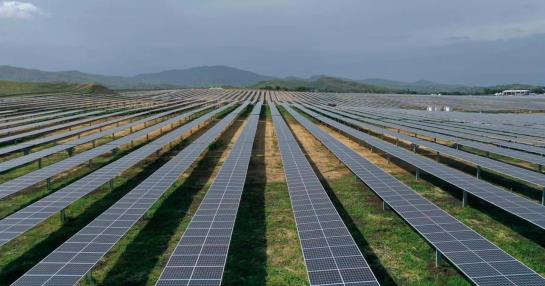In 2021, the park electricity generation from the Dominican Republic received new plants that contributed to increasing installed capacity and diversifying local energy production sources. However, the country still does not have a “cold reserve” that would allow one or several plants to go out of operation.
Although only solar generation entered, the installed capacity of electricity production in the country grew by 3.2% during the past year, closing with an installed capacity of around 5,027.8 megawatts, higher than the 4,870 megawatts of 2020, for a net increase of 157.8 megawatts, according to data from the Coordinating Body (OC).
The OC statistics reflect that the solar generation capacity went from 187.5 megawatts in 2020 to 345.3 megawatts a year later, being the only source of electricity production that increased its participation in the generation park.
But the new electricity generation that enters the system each year only makes it possible to minimally cover the demand for the service and prevent the exit of plants due to maintenance or damage from causing blackouts.
“The demand grows every year due to multiple factors, and in the Dominican Republic there has hardly ever been a plan and strategy for the construction of new power plants, which not only supplies the maximum demand, but also gives it a cold reserve for any eventuality” , stated the Minister of Energy and Mines, Antonio Almonte, to Free Journal.
Almonte explained that the system should have a cold reserve equivalent to between 10 and 15% of the maximum annual electricity demand. He stressed that, to overcome this situation, the government launched a strategic plan to build generation capacity to supply demand for decades and have backup power.
He indicated that, within these purposes, in March of last year an international public tender was launched for the construction of two plants of 400 megawatts each, based on natural gas, in Manzanillo, plus a gas terminal.
He added that last December an emergency tender was also presented for the short-term installation of 400 megawatts in several plants, a tender designed to guarantee that in the summer months the country has enough capacity to meet demand.
“On January 6 of this year, another tender was launched for 800 megawatts, these in the medium term, which will be distributed in several plants, also based on natural gas and fuel oil number six. We are talking about the fact that the country, by the end of 2024 or 2025, could have around 2,000 megawatts, which will be enough to supply the peak demand at any time and have a cold reserve,” the official assured.
During 2021, the President of the Republic, Luis Abinader, inaugurated several solar parks, including the Sunflower, built by the Haina Electricity Generating Company (EGEHaina) in Yaguate, San Cristóbal province, with an installed capacity of 120 megawatts.
In the same way, he entered the park of electricity generation Dominican Republic the AES Bayasol photovoltaic plant, inaugurated by the president in May, which has a nominal power to inject 50 megawatts into the system.
Likewise, last year Abinader gave the first punch for the construction of the El Soco Solar Photovoltaic Park, in San Pedro de Macorís, which once it is operational will have a nominal capacity of 50 megawatts; and the DSS Photovoltaic Park, on Circunvalación Avenue, in North Santo Domingo, which will generate about 116 gigawatt hours per year.
The records of the OC reflect that last year the rest of the country’s electricity generation sources remained unchanged, in terms of their installed capacity. Natural gas and mineral coal remained in 2021 as the two predominant fuels in the country’s energy production, in terms of installed capacity. The first represents more than 1,400 megawatts and the second 1,000 megawatts. These two are followed by fuel oil number six, with an installed generation capacity of 973.9 megawatts, and hydroelectric plants with 623.3 megawatts. The rest of the matrix is made up of wind (370.3 megawatts), solar (345.3 megawatts), fuel oil number two (100 megawatts) and biomass (30 megawatts).


















